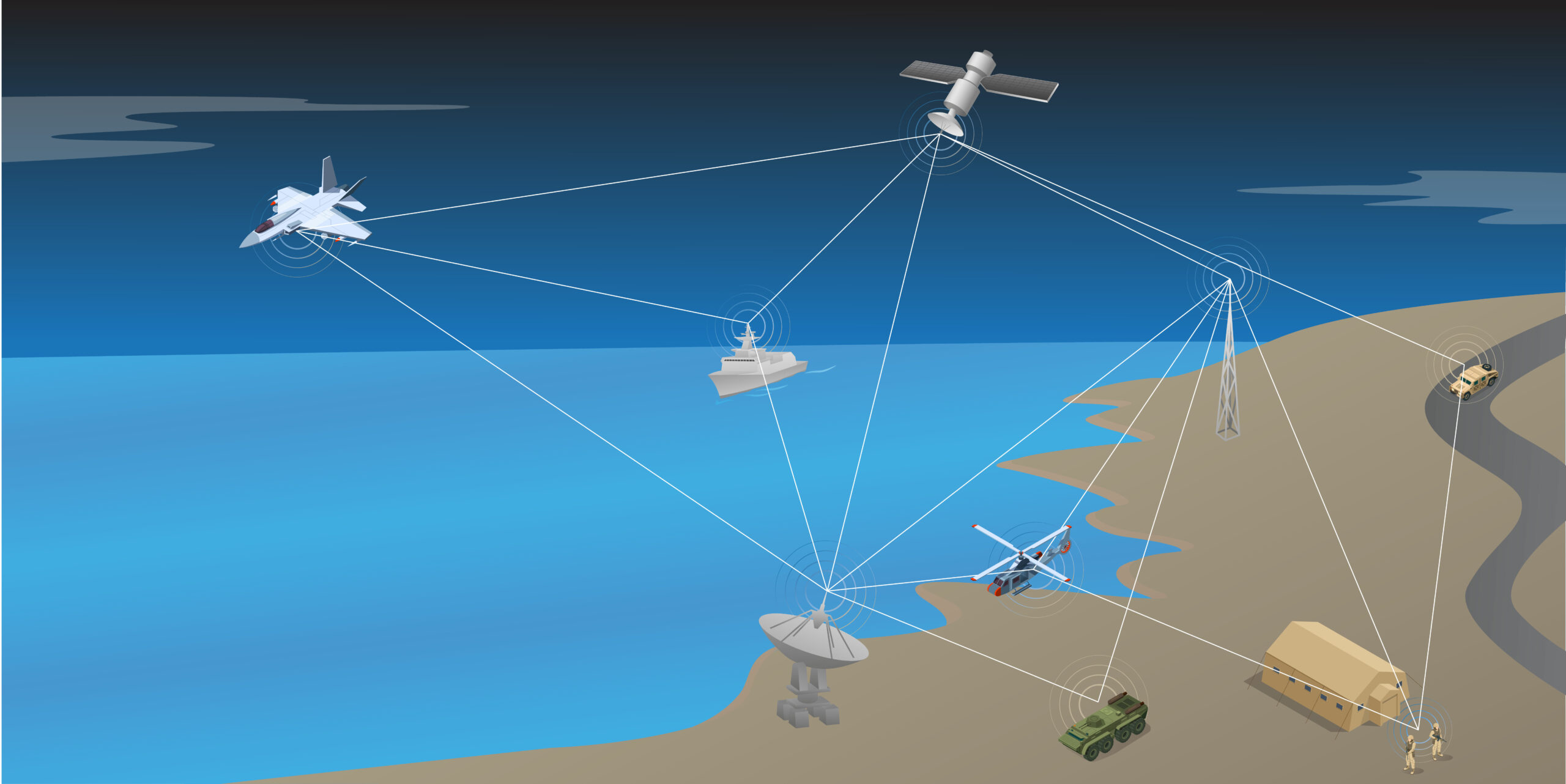
The need for an integrated communication infrastructure has led to rapid changes as the Department of Defense (DoD) seeks the ability to acquire, maintain and secure its information and decision advantage over adversaries. Decision dominance in multi-domain operations is driven by the precise ability of real-time data, predictive analytics, along with artificial intelligence (AI) and machine learning (ML) to create an environment capable of situational awareness and actionable intelligence.
To provide our armed services and partners with the improved ability to detect and act on information across the battle space, the DoD implemented the Joint All-Domain Command and Control (JADC2) initiative.
The JADC2 vision aims to create a secure, unified command and control network in a cloud-based environment that enables rapid receipt and transmission of intelligence, surveillance and reconnaissance (ISR) data to interconnected networks across all branches of defense.
Providing the Tactical Edge
From land, sea, air, space and in cyberspace, information will better flow across the streamlined network versus what was possible with the original communications architecture. Because it’s a concept as opposed to a solitary technology, platform or system, JADC2 transforms the once single-thread operation of sensor data collection into a highly integrated collaborative system. Sensors from every domain feed into the AI algorithms and provide continuous, updated situational awareness that is delivered instantly to human commanders or executed autonomously.
Speed, accessibility and data sharing ensure the success of JADC2, improving tactical timelines across all domains. Being able to effectively translate data between platforms and provide interconnected communication through open architecture and multi-level secured networks is the future of an efficient defense strategy. The JADC2 initiative goes on to potentially solve long-range kill chains by linking multi-domain assets to one another and processing data at the edge to create an autonomous operational environment.
Processing Power Enabled by AI
Much of the JADC2’s success is predicated on information—collecting, processing, sharing, deciphering—that significantly benefits from the use of AI-based data management. Leveraging AI, ML and advanced algorithmic warfare systems provides a significant advantage to achieving decision superiority.
A dominant COTS (commercial-off-the-shelf) solution for AI at the edge (AIAE) processing, which means deploying AI algorithms on devices physically close to the data source, is a GPGPU. This refers to the use of a GPU to perform general-purpose computations in addition to its traditional role of rendering graphics.
Advances in technology are bringing to the market small form factor, higher performance supercomputers, which combine GPGPUs with CPUs and can be used for AIAE applications. Designed to handle large amounts of data in parallel, GPUs are ideal for performing certain computations much faster than traditional CPUs. So, by leveraging the parallel processing power of GPUs that are widely used for AI applications, GPGPU can accelerate a wide range of AI applications.
For shared data networks across multiple domains, like the concept defined in JADC2, this accelerated management of data will significantly improve real-time intelligence in military operations.
Challenges Left to Address

Along with deeming benefits to revolutionize military technology, the JADC2 initiative faces challenges before becoming the multi-facilitated decision-making concept that the DoD envisions.
The network and capabilities necessary for JADC2 to meet its full operational potential requires an ecosystem on a scale that the military has yet to see. When disparate networks are brought together, security concerns rise. Cloud computing is the backbone of JADC2, and adversaries will be searching for weaknesses they can exploit through software vulnerabilities to gain access to sensitive and classified information.
For the DoD to address the need of tighter security for JADC2 requires centralization monitoring and incident response capabilities that can support a platform as large and versatile as what is envisioned in the JADC2 initiative.
Adopting open systems architectures to the JADC2 concept would help the DoD migrate from proprietary solutions and allow for easier integration among all domains, while also permitting various systems to interoperate with one another.
Next Steps in A Unified Data Network
When the defense industry, system developers and government work together, single sophisticated global networks like JADC2 can come to fruition. With an open systems approach that builds on security, durability and connectivity, all military branches will be better suited to deter adversaries as well as communicate and fight as a unified force.
Collectively recognizing data as a strategic asset, and employing it an enterprise-wide, holistic approach in multi-domain operations will serve to advance the JADC2 initiative and enable improved decision superiority across military missions.
The team at Aitech continues to apply our four decades of experience and knowledge in rugged military computing to enhance JADC2 compliance.



